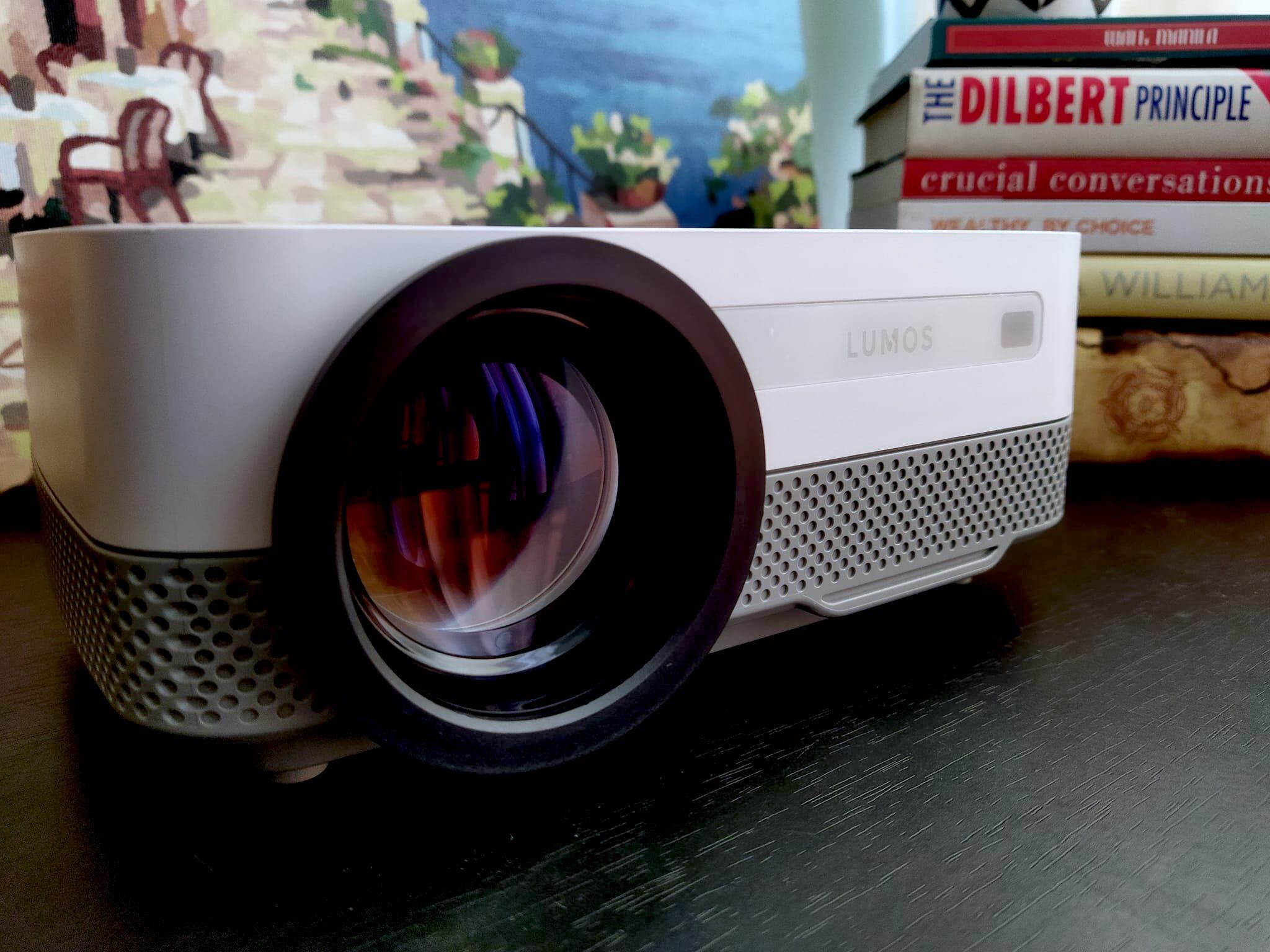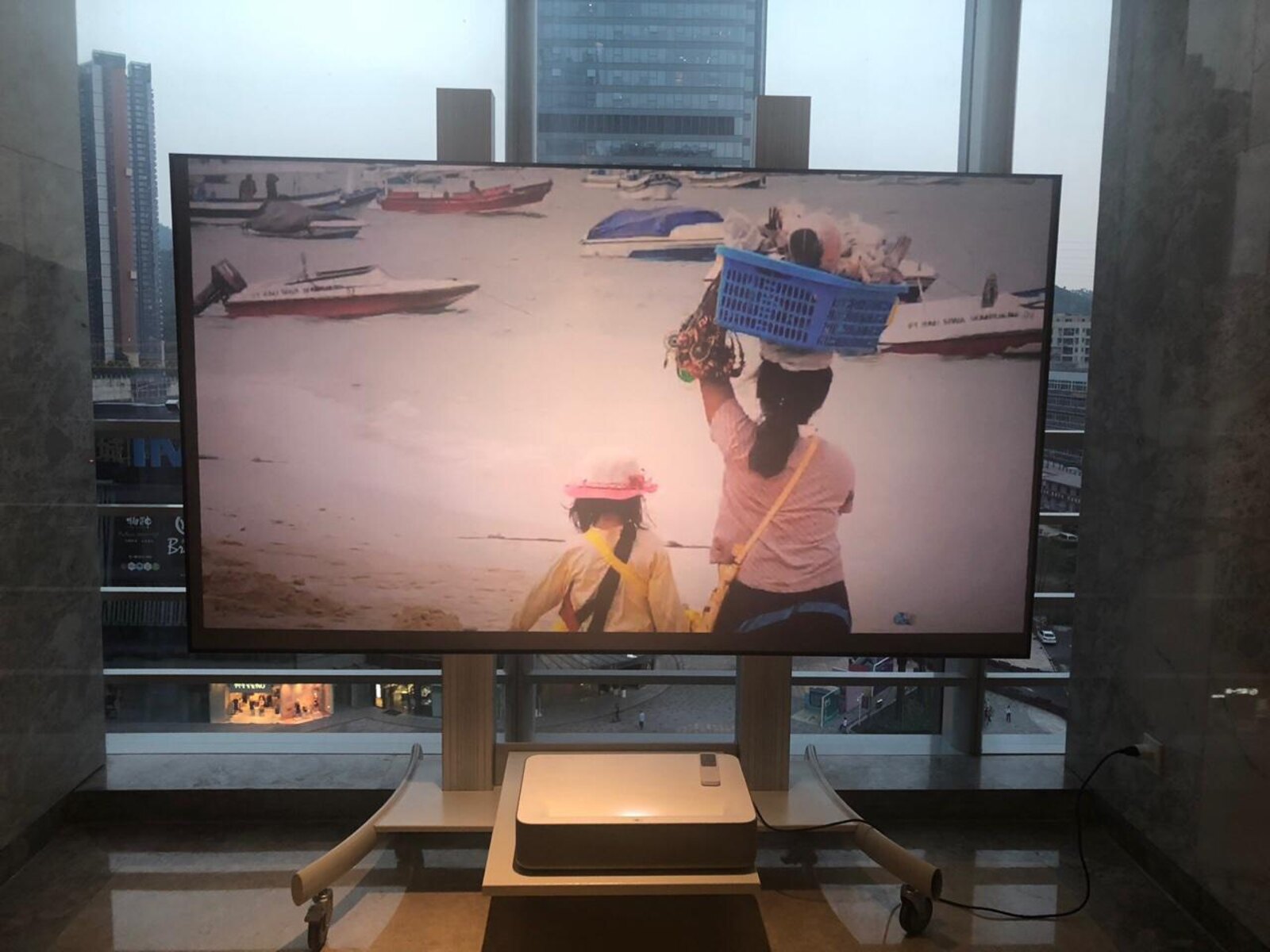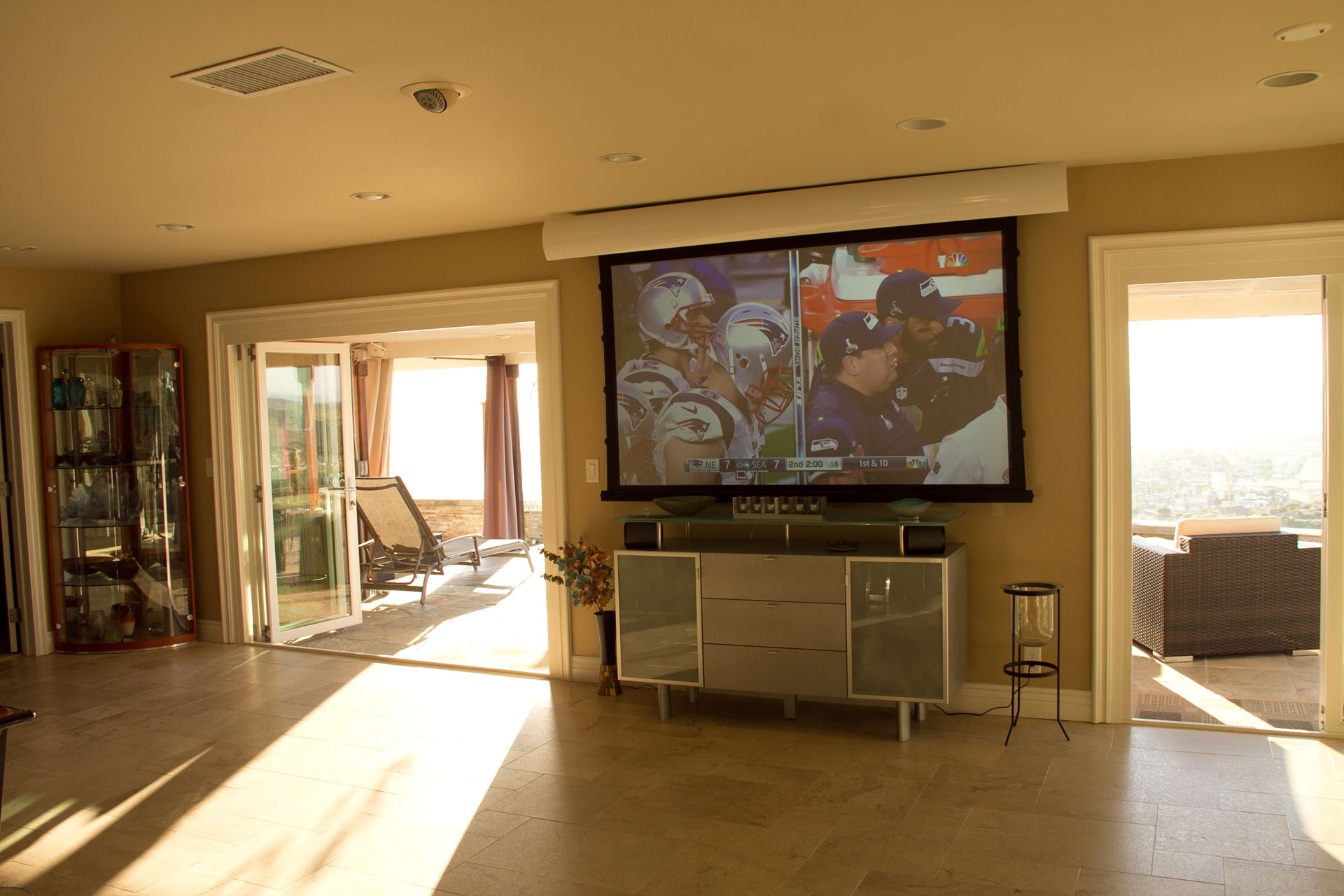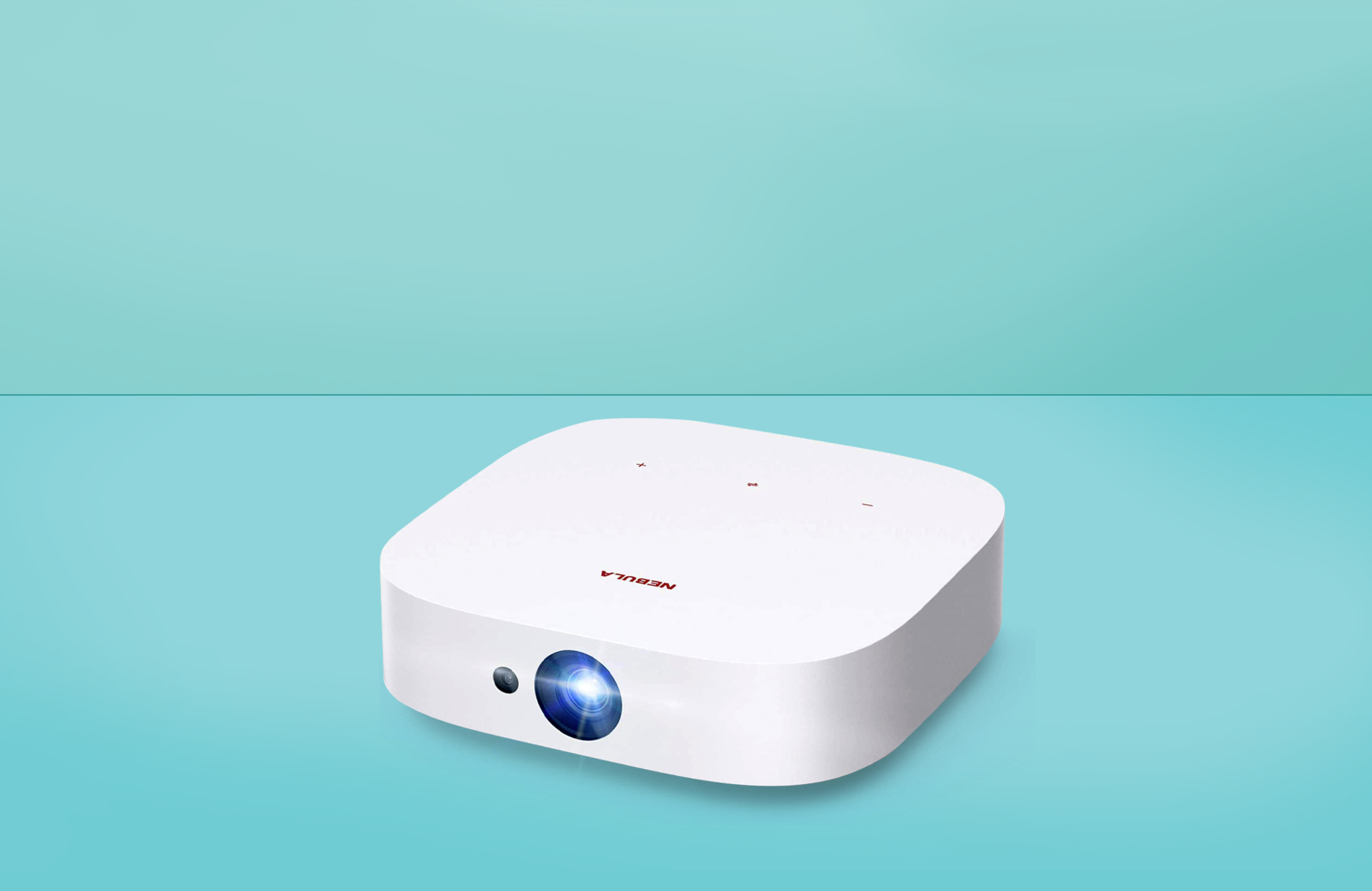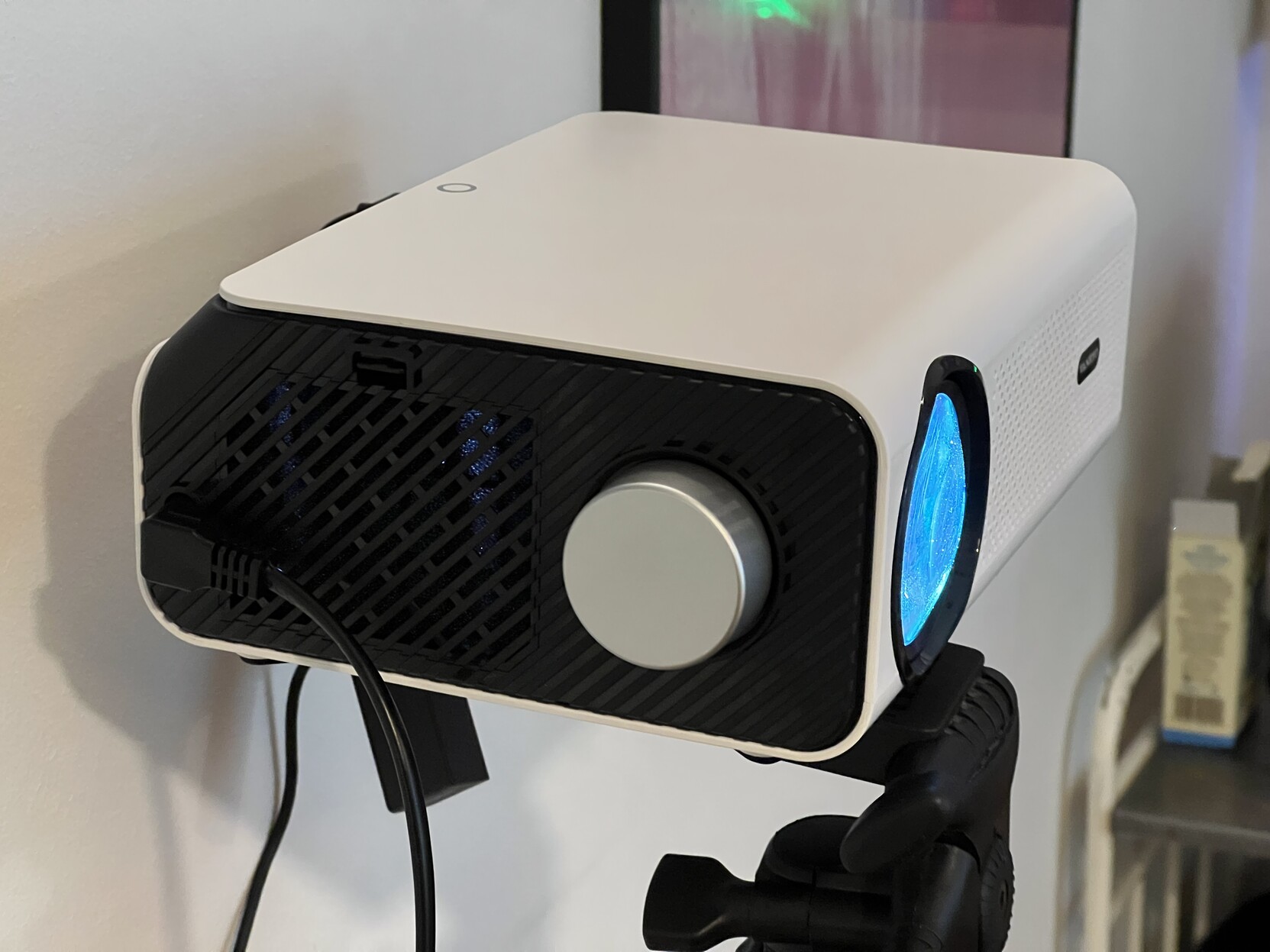Introduction
Welcome to the world of projectors! Whether you’re setting up a home theater, organizing a conference, planning an outdoor event, or facilitating a classroom or training session, having the right projector is essential for creating a captivating visual experience. One important factor to consider when choosing a projector is the number of lumens it provides. But what exactly are lumens and how many do you need?
Lumens refer to the measure of brightness provided by a projector. The higher the number of lumens, the brighter the projector’s output will be. This brightness is crucial in ensuring clear and vibrant images, especially in environments with various lighting conditions.
In this article, we will explore how many lumens you need for a good projector based on different settings. We will also delve into the factors you should consider when selecting the appropriate lumens for your projector, such as room lighting conditions, screen size and distance, and the type of content you will be displaying.
By the end of this article, you will have a better understanding of the lumens required for your specific needs and be equipped to make an informed decision when purchasing a projector.
What are Lumens?
Before we dive into the discussion of how many lumens you need for a good projector, it’s important to understand what lumens actually are. Put simply, lumens are a unit of measurement that quantifies the brightness or light output of a projector. The higher the number of lumens, the brighter the projector’s image will be.
While lumens are often associated with projectors, they are actually a general measure of light intensity. In the context of projectors, lumens refer to the amount of light emitted by the projector’s lamp or LED source. This light is then transferred through the projector’s optics system and onto the screen, creating the projected image that we see.
Lumens play a crucial role in determining the quality of the projected image. A projector with higher lumens will produce a brighter and more vibrant image, which is especially important in environments with ambient light or when projecting onto a larger screen.
It’s worth noting that the actual brightness perceived by the viewer also depends on the screen size, room lighting conditions, and the distance between the projector and the screen. Therefore, while lumens provide a standardized measurement of brightness, it’s essential to consider these other factors when determining the ideal number of lumens for your specific needs.
Now that we have a basic understanding of what lumens are, let’s explore how many lumens you need for different projector settings and the factors that influence this decision.
How Many Lumens Do You Need for a Projector?
When it comes to determining the number of lumens you need for a projector, it’s important to consider several factors to ensure optimal image quality. Let’s take a closer look at these factors:
1. Room Lighting Conditions: The level of ambient light in your projection area plays a significant role in determining the required lumens. If you plan on using the projector in a dark room with minimal to no ambient light, you can opt for a lower lumen count. However, if you’ll be projecting in a well-lit environment or with windows that cannot be completely shaded, you’ll need a projector with higher lumens to combat the competing light and still produce a bright image.
2. Screen Size and Distance: The size of your projected screen and the distance between the projector and the screen also affect the required lumen count. In general, larger screens will require more lumens to maintain a bright and clear image. Similarly, if you’re projecting from a longer distance, the image may lose some brightness, so selecting a higher lumen projector can help compensate for this.
3. Type of Content: Consider the type of content you’ll be displaying. If you primarily project movies, images, or presentations with a lot of graphics and vibrant colors, you’ll want a projector with higher lumens to ensure those details are accurately displayed. On the other hand, if you mostly project text-based content like presentations or documents, a lower lumen count may suffice.
It’s essential to strike a balance between having enough lumens for a bright image and not overspending on lumens you don’t actually need. Going for the highest lumen count might result in unnecessary expenses that could be better allocated elsewhere in your setup.
There is no definitive answer to how many lumens you need for a projector, as it depends on the specific requirements of your projection environment. However, as a general guideline, a projector with 1500 to 2500 lumens is suitable for most home theater and small meeting room setups. For larger spaces, such as conference halls or outdoor events, projectors with 2500 lumens or more would be ideal.
By taking into account room lighting conditions, screen size and distance, and the type of content you’ll be projecting, you can determine the optimal number of lumens for your projector setup. Next, we’ll provide recommended lumen ranges for different settings to further assist you in choosing the right projector.
Factors to Consider When Choosing Lumens for a Projector
Choosing the right number of lumens for your projector requires careful consideration of various factors. Let’s delve into these factors to help you make an informed decision:
1. Room Lighting Conditions: The level of ambient light in your projection area significantly impacts the brightness of the projected image. If your room can be completely darkened, you can opt for a projector with lower lumens. However, if you’ll be using the projector in a room with moderate to high ambient light, such as a living room, conference room, or classroom, you should consider a higher lumen count to compensate for the competing light and maintain a clear and vibrant image.
2. Screen Size and Distance: The size of your projected screen and the distance between the projector and the screen are crucial factors to determine the required lumens. Larger screens will naturally require more lumens to produce a bright and detailed image. Additionally, if you need to project from a longer distance, the image might lose some brightness, so selecting a projector with higher lumens can offset this reduction and ensure a clear image.
3. Type of Content: The type of content you plan to project also influences the required lumens. If you mostly showcase movies, videos, or high-resolution images with vibrant colors, a projector with higher lumens is recommended to accurately reproduce those colors and details on the screen. On the other hand, if you primarily display text-based content, such as presentations or documents, a lower lumen count may be sufficient, as text generally requires less brightness to be legible.
4. Desired Image Quality: Consider the level of image quality you want to achieve. Higher lumens generally result in a brighter and more vibrant image. If you prioritize image clarity and vividness, investing in a projector with higher lumens can ensure a visually impressive experience. However, keep in mind that the cost of higher lumen projectors is typically higher, so assess your budget and image quality requirements accordingly.
5. Budget: Cost is an important factor to consider when choosing the number of lumens for your projector. Typically, projectors with higher lumens are more expensive. Therefore, it’s essential to strike a balance between the desired image quality, budget constraints, and the specific requirements of your projection environment.
By carefully considering these factors – room lighting conditions, screen size and distance, type of content, desired image quality, and budget – you can make an informed decision about the appropriate number of lumens for your projector. Understanding these factors will help you select a projector that meets your specific needs and delivers an outstanding projection experience.
Room Lighting Conditions
The lighting conditions in your projection room play a crucial role in determining the number of lumens you need for your projector. Consider the following factors when assessing the lighting conditions:
1. Ambient Light: Evaluate the amount of ambient light present in the room where you’ll be using the projector. If the room can be fully darkened and you have complete control over the lighting, you can opt for a projector with lower lumens. However, if you’ll be projecting in a room with moderate to high levels of ambient light, such as a living room with windows or a conference room with overhead lighting, you should consider a higher lumen count to compensate for the additional light sources and maintain a bright and clear image.
2. Light Sources: Take note of the various light sources in the room, including windows, overhead lights, lamps, or any other fixtures that emit light. These light sources can contribute to the overall lighting conditions and potentially impact the visibility of the projected image. Assess the intensity and direction of these light sources to determine how they may affect the projection and adjust your lumens accordingly.
3. Light Control Options: Consider the options available to control and adjust the lighting in the room. If you have the ability to dim or turn off certain lights, it can help create a more ideal projection environment. Additionally, using blackout curtains or blinds for windows can effectively block out external light and enhance the overall viewing experience. By utilizing light control options, you can potentially reduce the required number of lumens for your projector.
4. Reflection and Screen Material: Keep in mind that the choice of screen material can also impact the visibility of the projected image. Some screen materials are designed to absorb ambient light, while others may reflect it back towards the viewer. Consider the characteristics of your screen material and how it interacts with the lighting conditions in your room. Opting for a screen that minimizes light reflection can help improve image contrast and overall clarity.
5. Image Quality Preference: Your personal preference for image quality should also be taken into consideration. If you desire a bright and vibrant image with high levels of visual detail, even in well-lit rooms, selecting a projector with higher lumens can help achieve that desired image quality. On the other hand, if you prioritize a more subdued and low-light viewing experience, you may opt for a projector with lower lumens to create a more intimate atmosphere.
By carefully assessing the lighting conditions in your projection room and considering factors such as ambient light, light sources, light control options, screen material, and image quality preference, you can determine the appropriate number of lumens needed for your projector. Understanding these conditions will allow you to optimize your viewing experience and ensure that the projected image is bright, clear, and visually appealing.
Screen Size and Distance
When determining the number of lumens you need for your projector, it’s important to consider the size of your projected screen and the distance between the projector and the screen. Here are some key factors to take into account:
1. Screen Size: The size of your projected screen directly affects the required lumens. In general, larger screens require more lumens to maintain a bright and sharp image. This is because the projected light needs to cover a larger surface area, and as a result, the brightness is spread out more thinly. It’s important to select a projector with enough lumens to ensure that the image remains clear and vibrant, even on a larger screen.
2. Viewing Distance: The distance between the projector and the screen also affects the required lumens. If you’re projecting from a shorter distance, the image will naturally appear brighter, as the light doesn’t have to travel as far. However, if you need to project from a longer distance, the image may lose some brightness along the way. In this case, choosing a projector with higher lumens can compensate for this loss and produce a clear and visible image.
3. Throw Ratio: The throw ratio of your projector is another factor to consider. The throw ratio determines how wide the image will be based on the distance between the projector and the screen. If your projector has a long throw ratio, meaning it needs to be placed further back to create a large image, you may require a higher lumen count to maintain the desired brightness. On the other hand, a projector with a short throw ratio will require fewer lumens due to the shorter projection distance.
4. Screen Gain: Take into account the screen gain, which refers to the screen’s ability to reflect and preserve the brightness of the projected image. A screen with higher gain reflects more light back to the viewer, resulting in a brighter image. If you have a screen with high gain, you can reduce the required lumens on the projector. Conversely, if your screen has lower gain or is designed to absorb ambient light, you may need a projector with higher lumens to compensate for the reduced brightness.
5. Image Quality Expectations: Consider your expectations for image quality. If you desire a high-quality, crisp, and well-defined image, especially on larger screens or from longer distances, you may need a projector with higher lumens. This will help ensure that the details of the projected image are clearly visible and vibrant. On the other hand, if you prioritize a more subtle and intimate viewing experience, a projector with lower lumens may suffice.
By carefully considering the screen size, distance between the projector and the screen, throw ratio, screen gain, and your image quality expectations, you can determine the appropriate number of lumens needed for your projector. This will enable you to achieve the desired brightness and image clarity for a captivating viewing experience.
Type of Content
When determining the number of lumens you need for your projector, it’s important to consider the specific type of content that you’ll be projecting. Different types of content have varying requirements in terms of brightness and color accuracy. Here are some key factors to keep in mind:
1. Movies and Videos: If you plan on primarily using your projector for watching movies or videos, you’ll want to ensure that the colors and details are accurately reproduced. Movies often have vibrant visuals and dynamic scenes that require higher luminosity to maintain their impact. Opting for a projector with higher lumens will help ensure that the colors pop, the dark scenes are sufficiently detailed, and the overall image quality is immersive.
2. Presentations and Data: For presentations or data-driven content such as graphs, charts, and text-heavy slides, a lower lumen count may be sufficient. While it’s still essential to have a clear and legible image, presentations typically don’t require the same level of brightness and color accuracy as movies or videos. In this case, opting for a projector with a moderate lumen count will be cost-effective and suitable for your needs.
3. Photography and Design: If you’re a photographer or designer showcasing your work, color accuracy is paramount. You’ll want to ensure that the colors in your images are faithfully reproduced on the screen. A projector with higher lumens and good color accuracy will be crucial to showcase the fine details and vibrant colors in your photographs or designs.
4. Gaming: Gaming enthusiasts often value quick response times and immersive visuals. While the required lumens for gaming can vary based on personal preference, opting for a projector with higher lumens will ensure that the visuals are bright, sharp, and responsive, especially during fast-paced action sequences.
5. Mixed Content: If you’ll be projecting various types of content, it’s important to find a balance. Consider the content that you’ll be using most frequently or prioritize the content that requires the highest level of brightness and color accuracy. Determine the lumen count based on that specific content and adjust accordingly for other types of content.
Keep in mind that personal preference also plays a role in choosing the right lumens for your projector. If you prefer vibrant and visually impactful content, a higher lumen count will enhance your viewing experience. On the other hand, if you prefer a more subdued and intimate ambiance, a lower lumen count may be more suitable.
By considering the type of content you’ll be projecting and evaluating the level of brightness and color accuracy required, you can determine the appropriate number of lumens needed for your projector. This will ensure that you have the optimal visual experience for your specific content.
Recommended Lumens for Different Settings
When selecting a projector, it’s helpful to have a general guideline to determine the recommended number of lumens for different settings. Here are some suggestions based on common use cases:
1. Home Theater: For a home theater setup in a dedicated dark room, it is recommended to have a projector with a lumen count between 1500 and 2500 lumens. This range provides a balance between brightness and image quality, allowing you to enjoy vibrant and immersive movie-watching experiences.
2. Conference Room: In a conference room or meeting space with controlled lighting conditions, a projector with 2500 to 3500 lumens is typically sufficient. This lumen range ensures that presentations, slides, and video conferences are clear and visible to all participants, even with ambient lighting or open curtains.
3. Outdoor Events: Outdoor events require projectors with higher lumens due to the lack of control over lighting conditions. For movie nights, sports screenings, or outdoor gatherings, a projector with 3500 to 5000 lumens is recommended to combat the competing ambient light and maintain a bright and engaging visual experience.
4. Classroom or Training Room: In educational settings where projectors are used for lectures or training sessions, a projector with 2000 to 3500 lumens is sufficient. This range ensures that the content is visible to all participants, even in well-lit environments, and maintains legibility for text-based content.
It’s important to note that these are general recommendations, and the actual required lumens may vary based on specific factors like screen size, room dimensions, and personal preferences. For larger rooms, higher lumen counts may be necessary to maintain image brightness and quality.
Additionally, if you anticipate using the projector in a variety of settings, such as both a home theater and a conference room, opting for a projector with adjustable brightness settings or lens options can provide flexibility to accommodate different lighting conditions.
Before making a final decision, consider these recommended lumens for the specific setting in which you’ll be using the projector. It’s always beneficial to consult with experts or read reviews to ensure you choose a projector that fits your needs for brightness, image quality, and overall viewing experience.
Home Theater
Creating a home theater experience requires careful consideration of various factors, including the number of lumens needed for your projector. Here are some recommendations for lumens in a home theater setting:
In a dedicated dark room or theater space, it is ideal to have a projector with a lumen count between 1500 and 2500 lumens. This lumen range strikes a balance between brightness and image quality, ensuring a captivating viewing experience without overwhelming the eyes.
The darkness of the room allows for better contrast and deeper black levels, enhancing the overall image quality. With a projector in the range of 1500 to 2500 lumens, you can enjoy vibrant and detailed colors, sharp details, and clear text on the screen.
With this lumen count, you can comfortably watch movies, TV shows, or other content without straining your eyes. The higher end of the range, around 2500 lumens, may be preferred for larger screens or if you plan on using some ambient lighting in the room.
Remember that screen size and distance also play a role in determining the required lumens for your home theater setup. If you have a larger screen, you may lean towards the higher end of the lumen range to maintain the desired brightness across the entire screen.
If your home theater space is not completely light-controlled and you anticipate some ambient light from windows or other light sources, you may want to consider a projector with slightly higher lumens to compensate. This will help ensure that the image remains clear and vibrant, even with some ambient light present.
Ultimately, the choice of lumens for your home theater depends on personal preference and the specific conditions of your setup. Factors such as screen size, room dimensions, seating distance, and the level of ambient light should all be taken into account when determining the optimal lumen count.
By selecting a projector with the recommended lumen range for a home theater setting, you can create a truly immersive and cinematic experience in the comfort of your own home. So sit back, relax, and enjoy your favorite movies with stunning visuals brought to life by your projector.
Conference Room
A conference room is a multipurpose space where presentations, meetings, and video conferences take place. To ensure clear and visible presentations, choosing the appropriate number of lumens for your projector is crucial. Here are some recommendations for lumens in a conference room:
In a conference room with controlled lighting conditions, a projector with 2500 to 3500 lumens is typically recommended. This lumen range provides sufficient brightness to overcome ambient light and ensures that your presentations, slides, and video conferences are visible to all participants.
With 2500 to 3500 lumens, you can deliver engaging presentations with vibrant colors, sharp text, and clear visuals. The high brightness allows for better visibility in moderately lit rooms, even with open curtains or moderate daylight.
Consider the size of the conference room and the distance between the projector and the screen when determining the lumen count. If the room is larger or if the screen is bigger, you may want to opt for the higher end of the lumen range to maintain optimal brightness across the viewing area.
Another factor to consider is the use of projectors in conjunction with video conferencing systems. In such cases, higher lumens may be required to ensure that participants on the other end of the video call can clearly see the content being shared.
Keep in mind that the lumen count also depends on the specific requirements of your conference room. If you anticipate using the projector in a room with higher ambient light, such as a room with windows or overhead lighting, you may want to consider a projector with higher lumens to compensate for the additional light sources.
Remember to adjust other factors such as screen gain, screen size, and room lighting to optimize the viewing experience. Utilizing high-contrast screens or implementing light control options such as dimming or adjusting the room lighting can further enhance the visibility and overall quality of your presentations.
By choosing a projector with the recommended lumen range for your conference room, you can ensure that your presentations are impactful, clear, and easily viewed by all participants. Whether you’re pitching ideas, sharing data, or conducting virtual meetings, a properly lit conference room enhances communication and collaboration among team members.
Outdoor Events
When it comes to outdoor events, choosing the right projector with the appropriate number of lumens is crucial to ensure a bright and engaging visual experience. Here are some recommendations for lumens in outdoor event settings:
Outdoor events often have unpredictable lighting conditions, making it challenging to control ambient light. To combat the outdoor lighting and create a vibrant image, a projector with 3500 to 5000 lumens is recommended.
With a higher lumen count in this range, you can counteract the competing ambient light, be it natural daylight or artificial lighting, and still maintain a bright and visible image on the screen. This ensures that your audience can fully immerse themselves in the content, whether it’s a movie night, sports screening, or a presentation.
Consider the size of the outdoor screen and the viewing distances when determining the ideal lumen count. Larger screens or larger viewing areas might require higher lumens to maintain adequate brightness and clarity across the entire viewing space.
Also, bear in mind that outdoor events often have different time frames, such as daytime or evening events. The required lumen count may vary depending on the time of day and the availability of natural light. For daytime events, you may need a projector with even higher lumens to combat the brightness of the sun.
In addition to lumens, consider other factors that can enhance the outdoor projection experience. This includes using screens with high contrast or screens designed to minimize the impact of ambient light. The use of audio systems and proper seating arrangements can also contribute to a more enjoyable outdoor viewing experience.
It’s important to assess the specificities of the outdoor event venue and lighting conditions beforehand to ensure that you choose a projector with sufficient lumens to deliver a clear and impactful image to your audience regardless of the surrounding environment.
By selecting a projector with the recommended lumen range for outdoor events, you can bring the big screen experience to your outdoor gatherings, capturing the attention and delight of your audience with vivid visuals under the open sky.
Classroom or Training Room
When it comes to classrooms or training rooms, having the right projector with the appropriate number of lumens is essential to ensure clear visibility of content and engaging learning experiences. Here are some recommendations for lumens in classroom or training room settings:
In a classroom or training room with controlled lighting conditions, a projector with 2000 to 3500 lumens is typically recommended. This lumen range provides sufficient brightness to overcome moderate ambient light and ensures that the content, such as slides, text, and visuals, can be easily seen by all participants.
With 2000 to 3500 lumens, you can deliver engaging and interactive lessons or training sessions with clear text, diagrams, and graphics. The brightness allows for optimal visibility even in well-lit rooms or with partially open curtains, ensuring that all participants can see the content from any seat in the room.
Consider the size of the classroom or training room, as well as the distance between the projector and the screen. Larger rooms or bigger screens may require higher lumen counts to maintain the desired image brightness and clarity across all areas of the room or viewing space.
Additionally, keep in mind the types of content typically used in educational settings. If text-heavy materials, such as presentations or documents, are frequently displayed, a lower lumen count may be sufficient. However, if the content involves multimedia, such as videos or animations, or if you want to emphasize visual details, opting for a higher lumen count within the recommended range may be beneficial.
It’s also important to ensure that the projector is compatible with interactive whiteboards or other interactive technology often used in classrooms or training rooms. This allows for seamless integration of interactive elements into your teaching or training materials.
Consider other factors such as screen gain, screen size, and room lighting to optimize the visibility and overall projection quality. Using screens with higher gain can enhance contrast and brightness, while proper lighting control, such as adjustable blinds or curtains, can further improve visibility during presentations or lectures.
By selecting a projector with the recommended lumen range for classroom or training room settings, you can create an environment conducive to effective learning and engagement. Students and participants will benefit from clear visuals and legible content, ensuring that lessons and training materials are easily understood and retained.
Conclusion
Choosing the right number of lumens for your projector is crucial to ensure optimal image quality and visibility in various settings. By considering factors such as room lighting conditions, screen size and distance, type of content, and specific setting requirements, you can determine the appropriate lumen count for your projector.
In a home theater setup, a projector with 1500 to 2500 lumens is recommended, providing a balance between brightness and image quality in a dark room. For conference rooms or meeting spaces, a projector with 2500 to 3500 lumens is typically sufficient to overcome ambient light and ensure clear presentations.
Outdoor events require projectors with higher lumens, ranging from 3500 to 5000 lumens, to combat the unpredictability of outdoor lighting conditions. In classrooms or training rooms, a projector with 2000 to 3500 lumens is recommended to deliver clear and visible content to all participants.
It’s important to note that these lumen recommendations serve as general guidelines. The specific requirements may vary based on screen size, distance, content type, and personal preferences. Adjustments can be made based on the specific conditions and needs of your setup.
Other considerations, such as screen gain, screen material, room lighting control, and desired image quality, can further optimize the visual experience. By evaluating these factors along with the recommended lumens, you can ensure a captivating and immersive projection experience.
Remember to research and consult with experts or professionals when selecting a projector, taking into account factors beyond lumens, such as resolution, contrast ratio, and connectivity options, to meet your specific needs.
Choosing the right number of lumens for your projector is essential to create vivid and engaging visuals that leave a lasting impact. By finding the perfect balance, you can enjoy the full potential of your projector in any setting, whether it’s for personal entertainment, professional presentations, or educational purposes.







